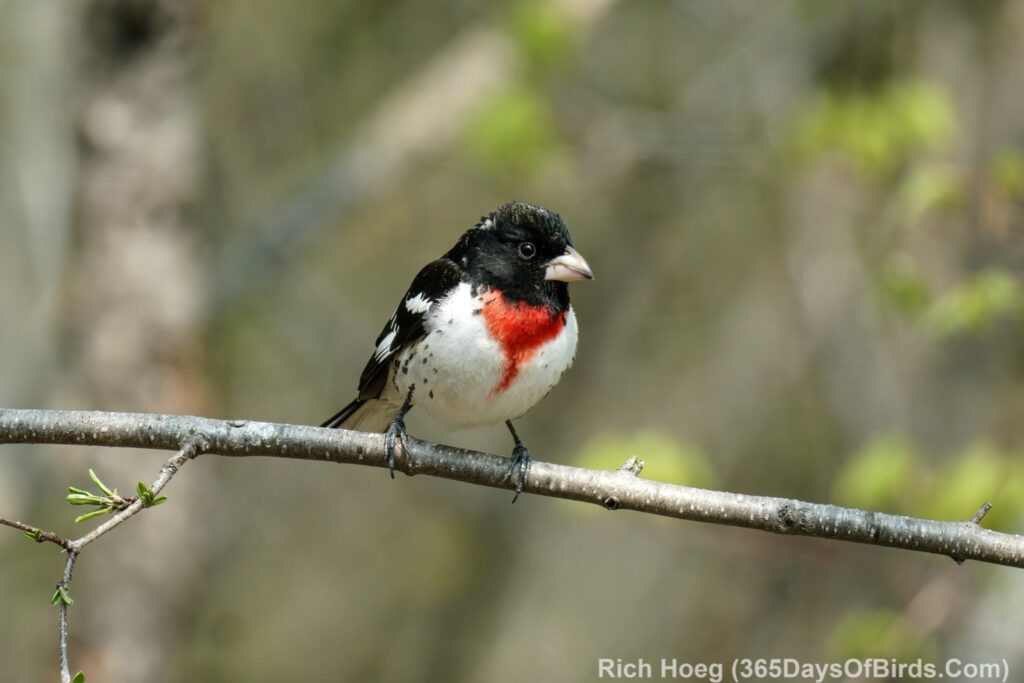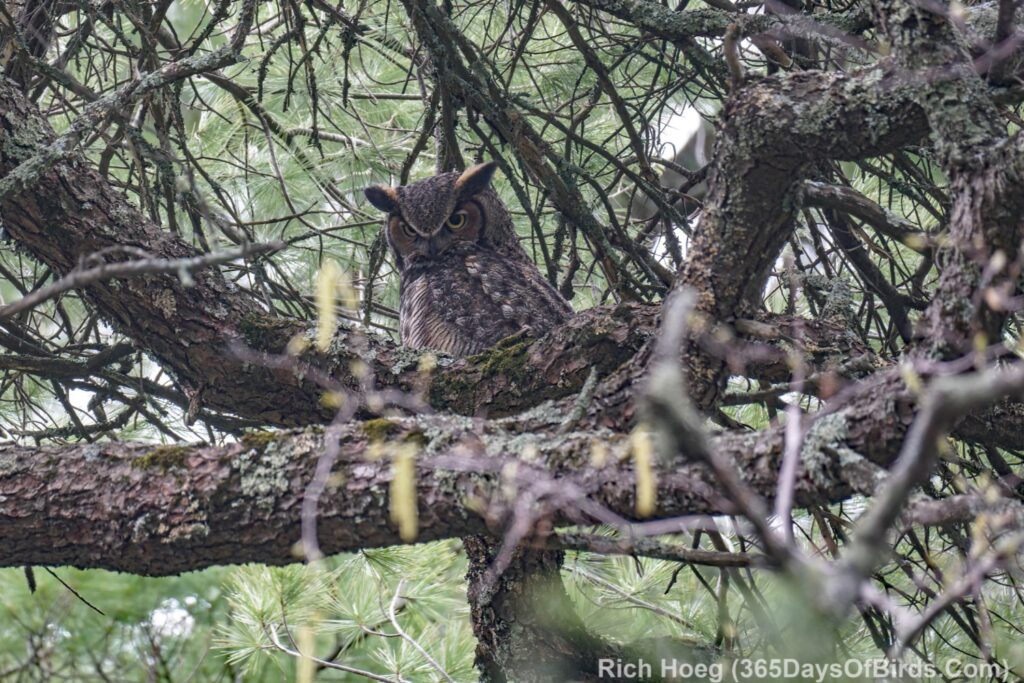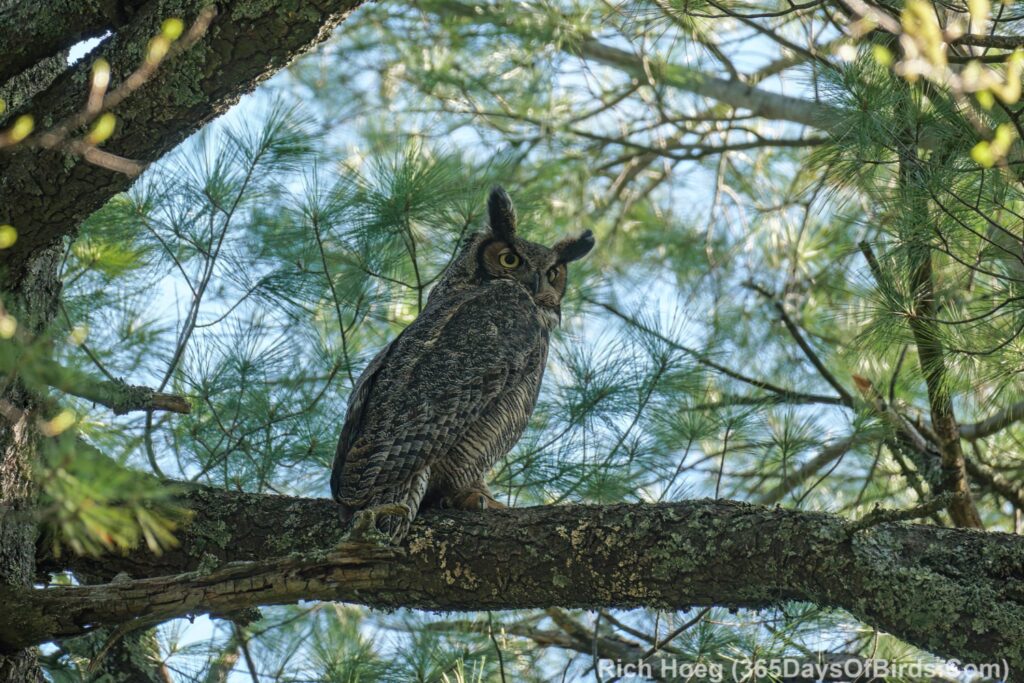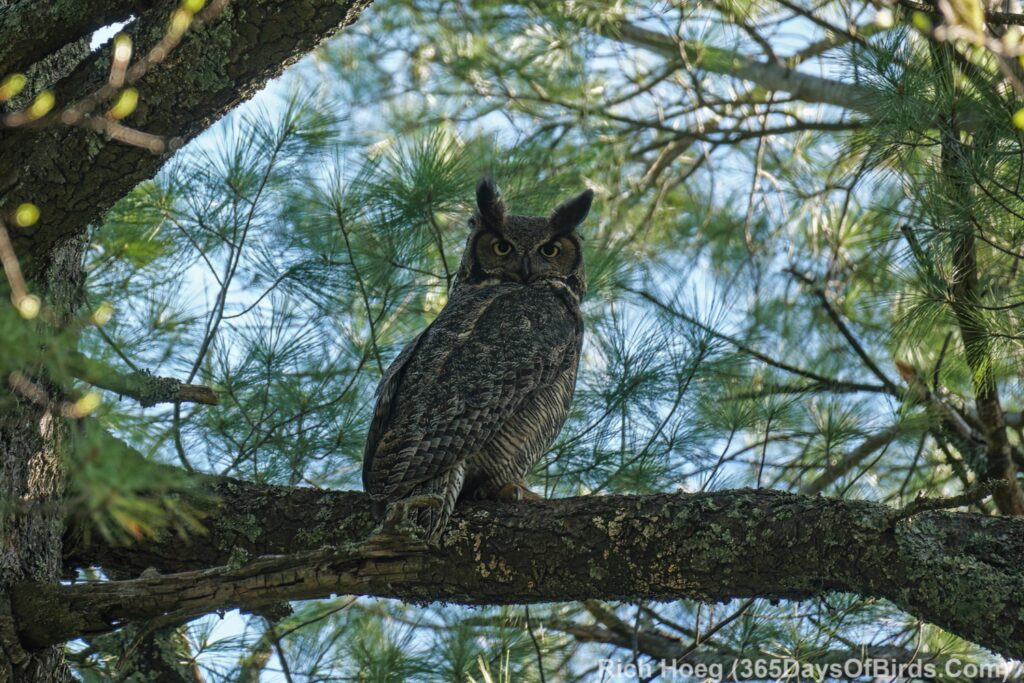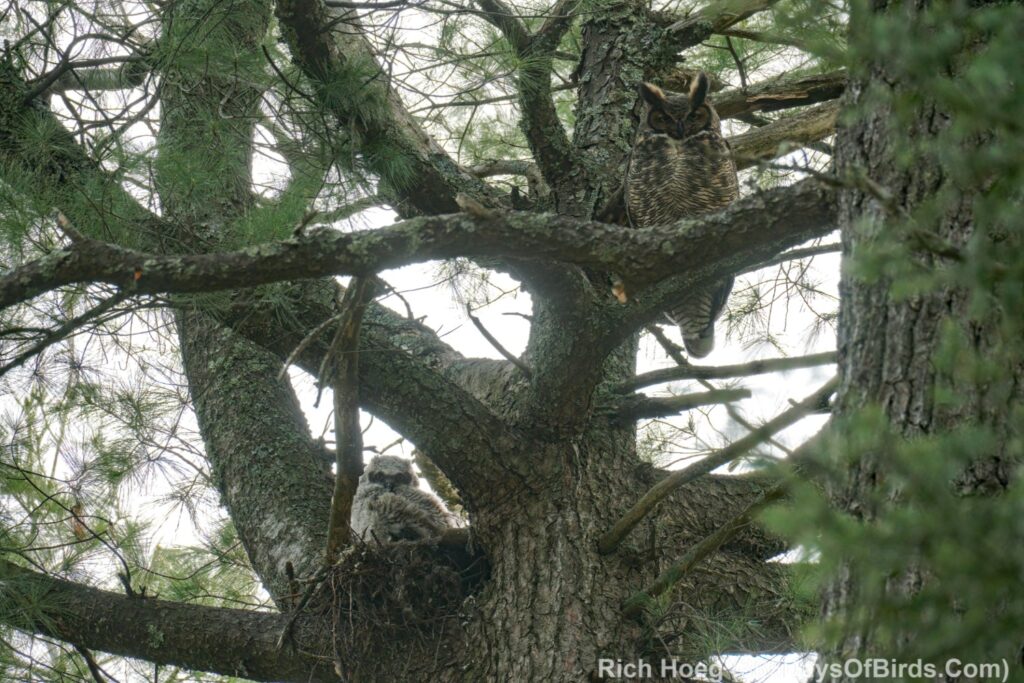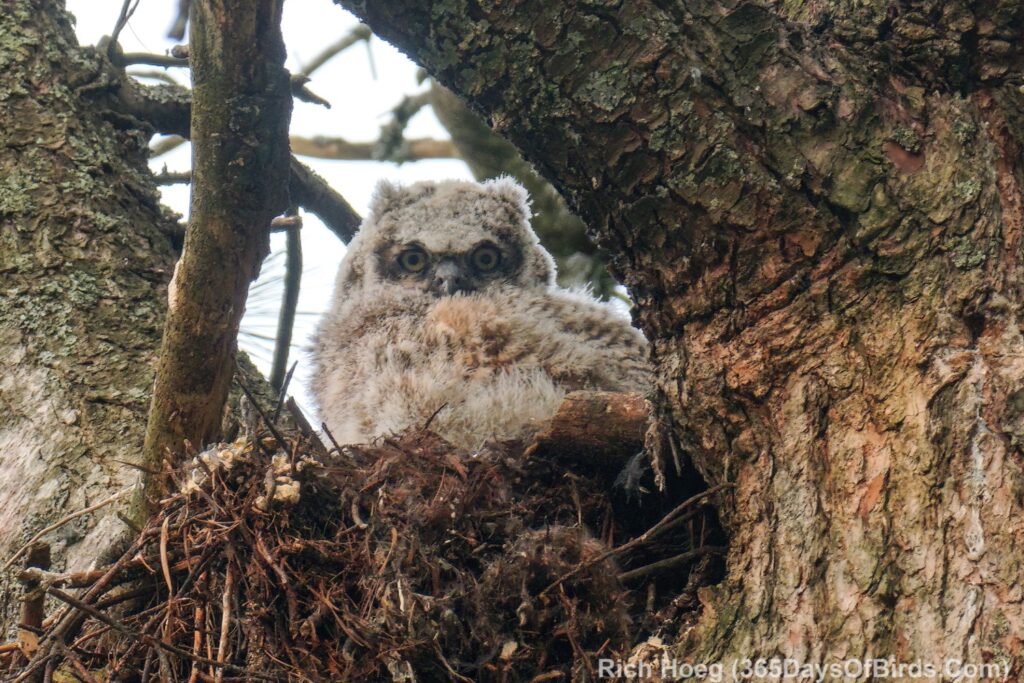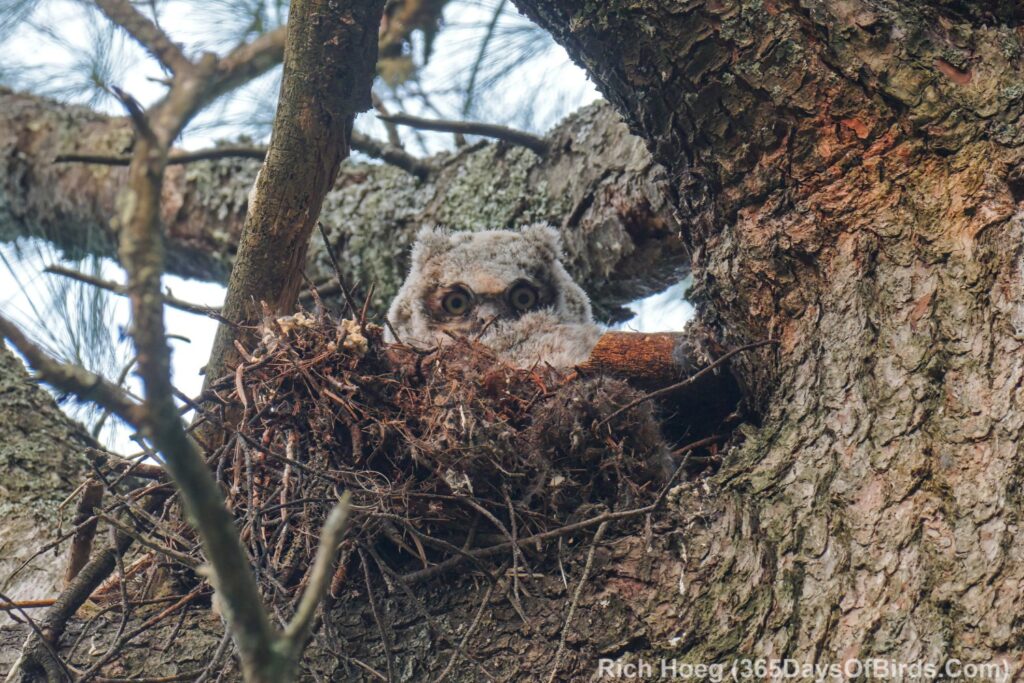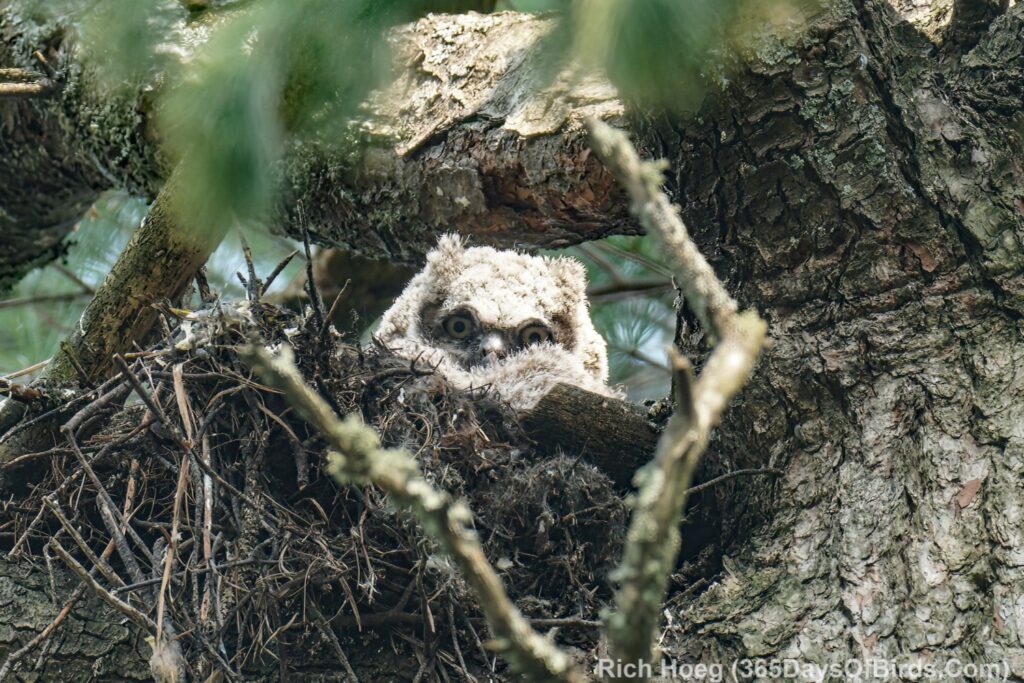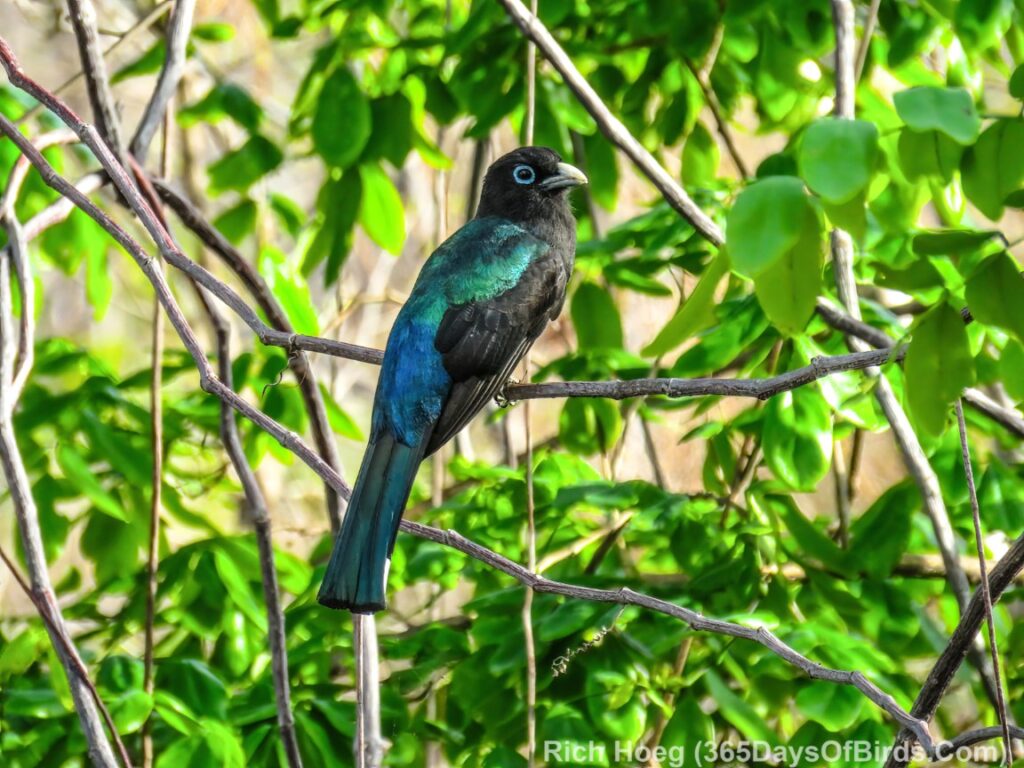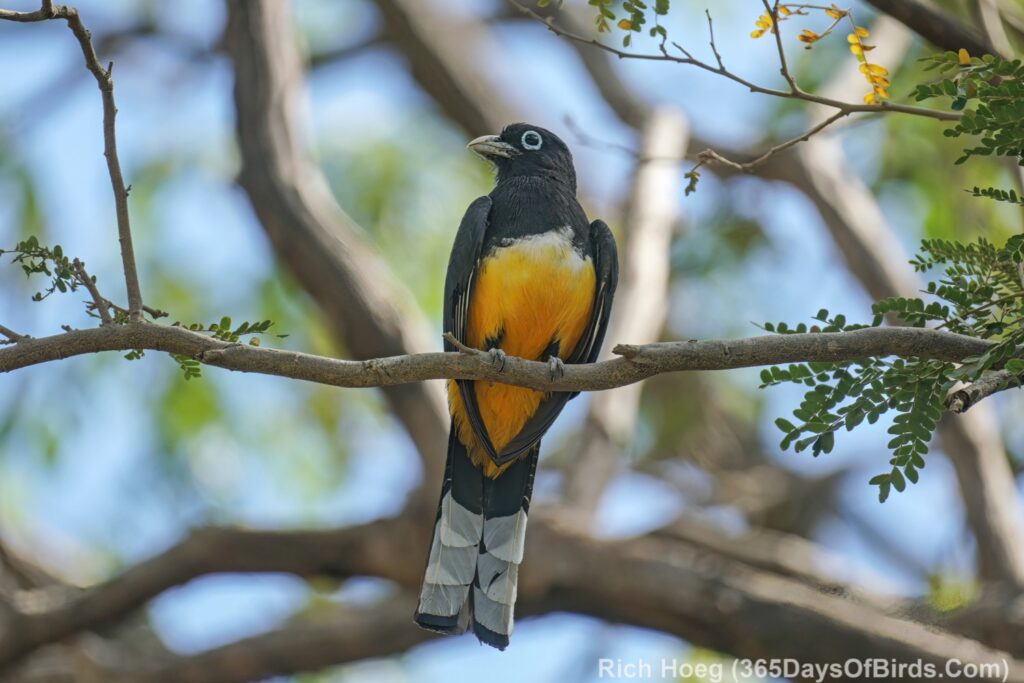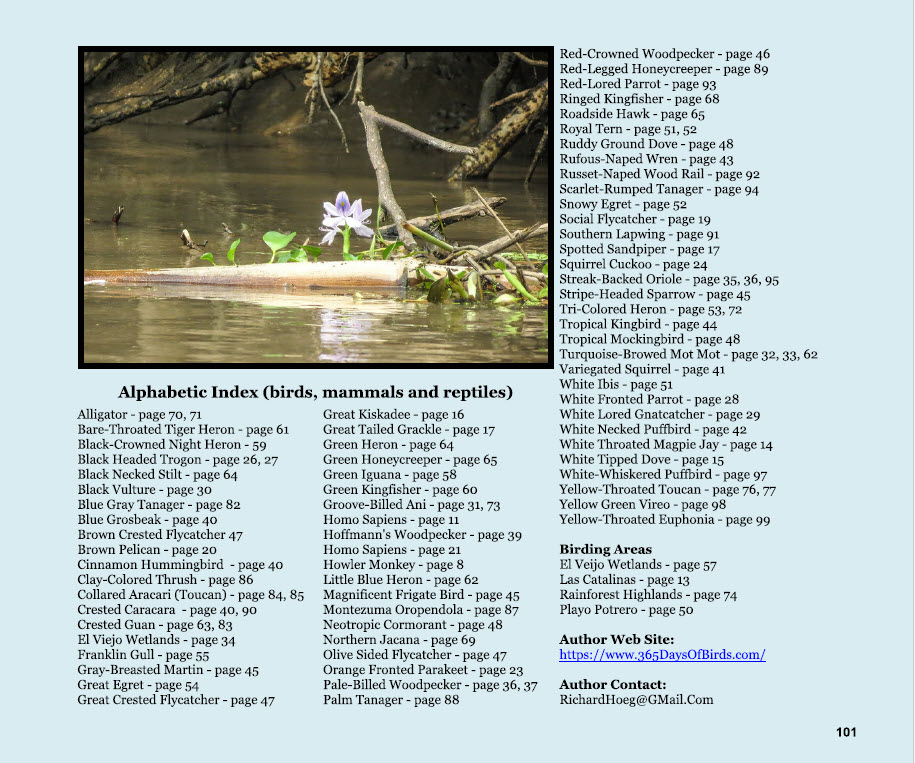At 7:00 this morning I visited Fuzz Ball. I cheered when I realized the young owl was now starting to branch! (chair?). The sooner the little guy gets back up high in a white pine tree the better. Here is an image from my morning visit.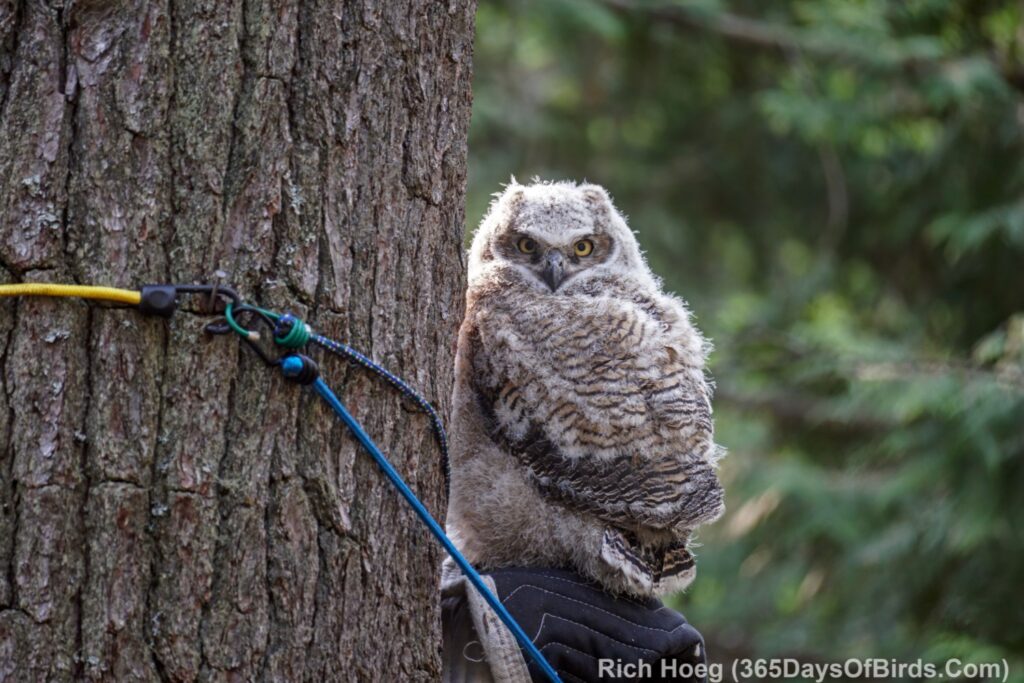
Later this morning before heading out to an appointment, I visited Fuzz Ball again. I wanted to measure the distance from the owl platform nest I had constructed to a white pine with some branches which is near by. Could I build a “branch” between the two pines?
Fuzz Ball was not in its new nest! I scanned its white pine and the nearby tree. No Fuzz Ball. Oh my word, what had happened? I first feared a predator had caught my little friend, but the parent owls always seem to be watching. After a few minutes I saw Fuzz Ball on the ground about 50 yards distant. I investigated. The young owl was not injured but was still not able to fly. I wondered if I placed the owlet in the pine with branches would it now be able to climb up high. Here is Fuzz Ball on the ground.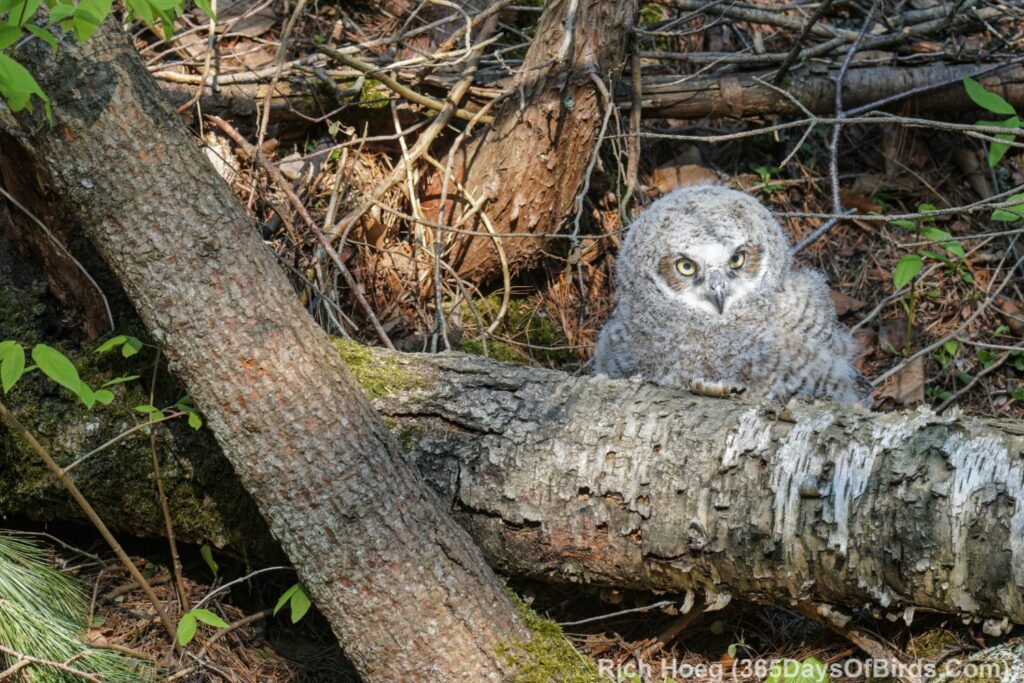
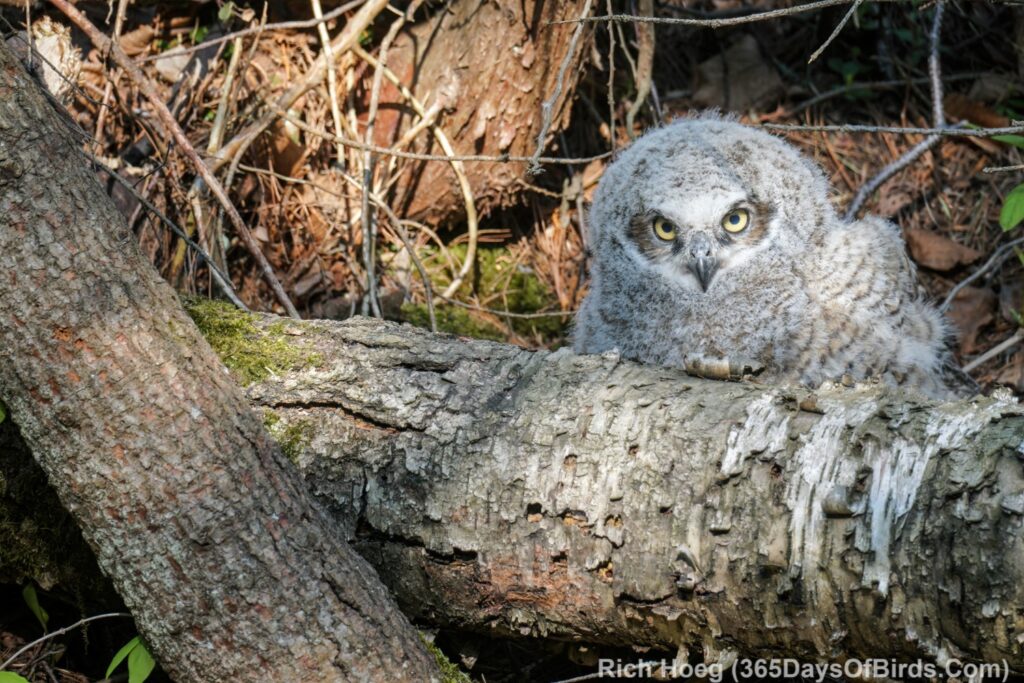
Unfortunately I discovered that not only can Fuzz Ball not yet fly, but the thin branches on the nearby pine tree were also problematic. I placed the owlet twice directly on a branch, and watched in dismay as it promptly got into trouble and fell again … twice. Eventually I returned Fuzz Ball to its manufactured nest. All is quiet once more in the forest, but here are two photos taken moments before the owlet’s second fall. Once again, I had placed FuzzBall directly on the branch.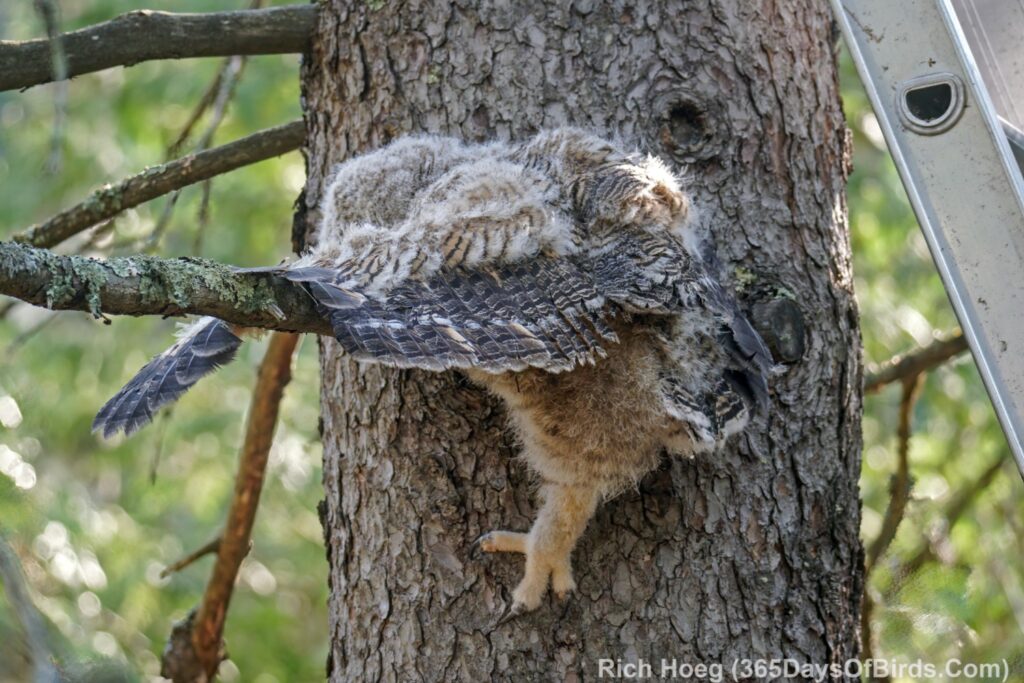
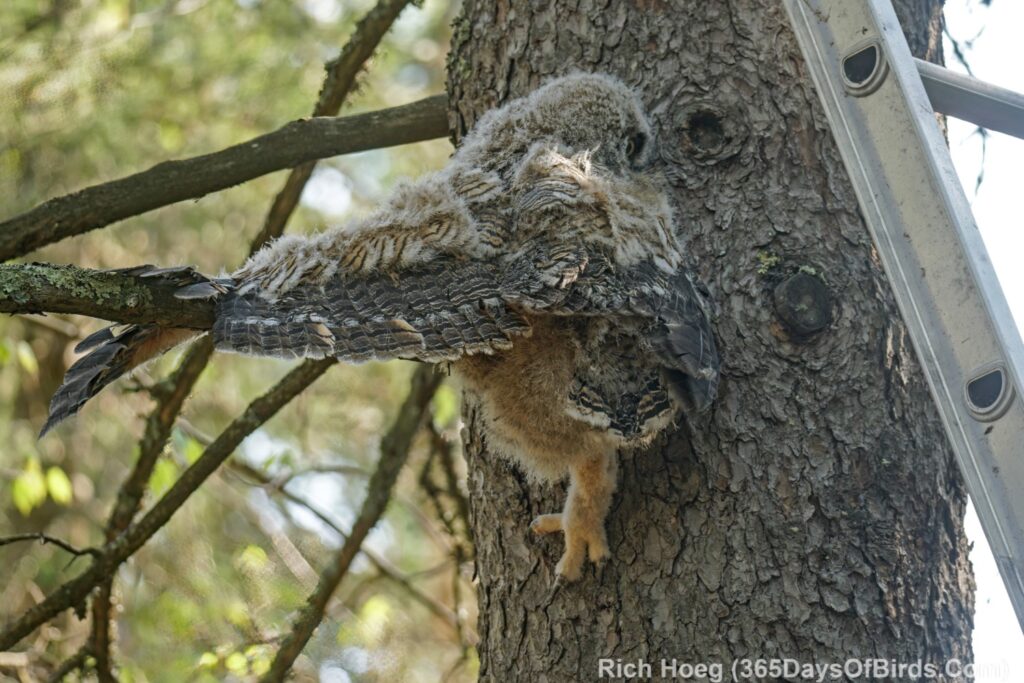
Here are two videos from this morning.
- Fuzz Ball on the Ground (video link)
- Fuzz Ball Falls (video link)
As a fyi, Great Horned Owls often nest in locations where it is impossible to branch. The owlets must fly when they venture forth for the first time. I have seen nests with owlets under bridges, in barn rafters, and in the crooks of cactus trees. None of these owlets had branches upon which to explore.
